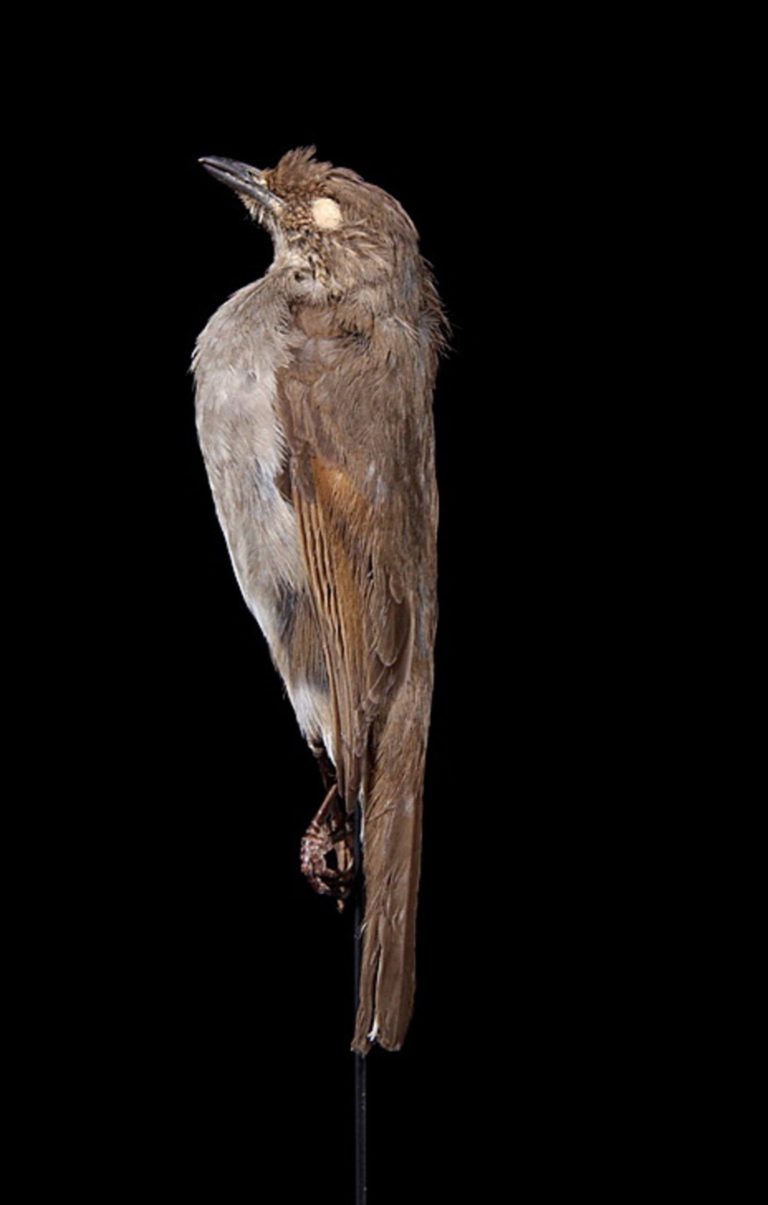Birdfinding.info ⇒ The last substantiated observation of Kama’o was the tape-recording of a singing male in the Alakai Swamp on June 27, 1987. Reports without corroborating evidence persisted till at least 1989 and possibly into the 1990s, but it seems clear that the precipitous decline of this species ended with its extinction sometime between June 1987 and the early 1990s. This history is among the most tragic of Hawaii’s endemics. In the late 1800s, the Kama’o was considered to be the most numerous native landbird on Kauai. By 1928 it was found only in montane forests above 1,100 m, then in the early 1970s its population was estimated at 340, and by 1981 it was estimated at 24. This sprint to oblivion seems most likely to have resulted from susceptibility to a pathogen—and it is notable that throughout this process Kauai supported a closely related thrush, the Puaiohi, which was already rare when described, but outlived the Kama’o.
Kama’o †
Myadestes myadestinus
Extinct. Formerly endemic to Kauai.
Identification
A large solitaire with brown upperparts, rusty flight feathers, and grayish underparts faintly scalloped with pale brown.
The Kama’o had a short, broad bill and dark legs, distinguishing it from Kauai’s other thrush, the Puaioh.
The immature plumage was brown with paler spots.
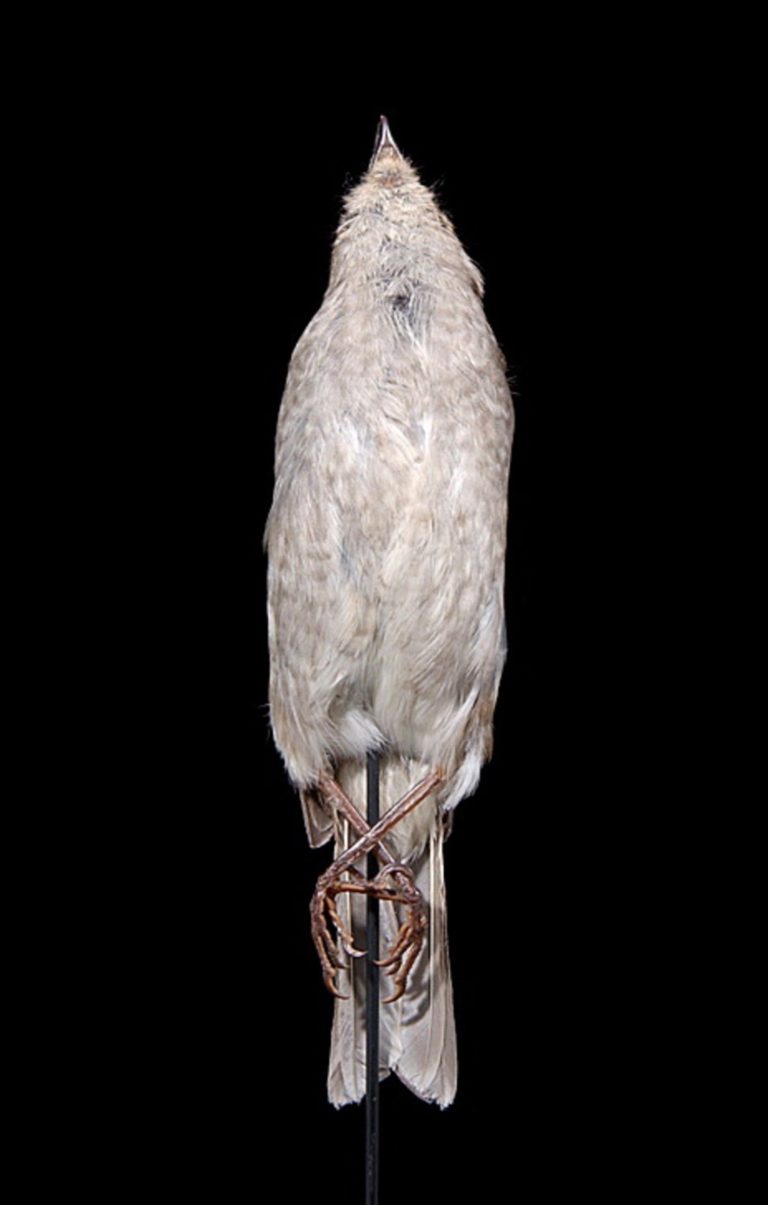
Kama’o, ventral view. (Specimen ID: RMNH.AVES.110025; Kahaluamanu, Kauai, Hawaii.) © Naturalis Biodiversity Center

Kama’o, side view. (Specimen ID: RMNH.AVES.110025; Kahaluamanu, Kauai, Hawaii.) © Naturalis Biodiversity Center
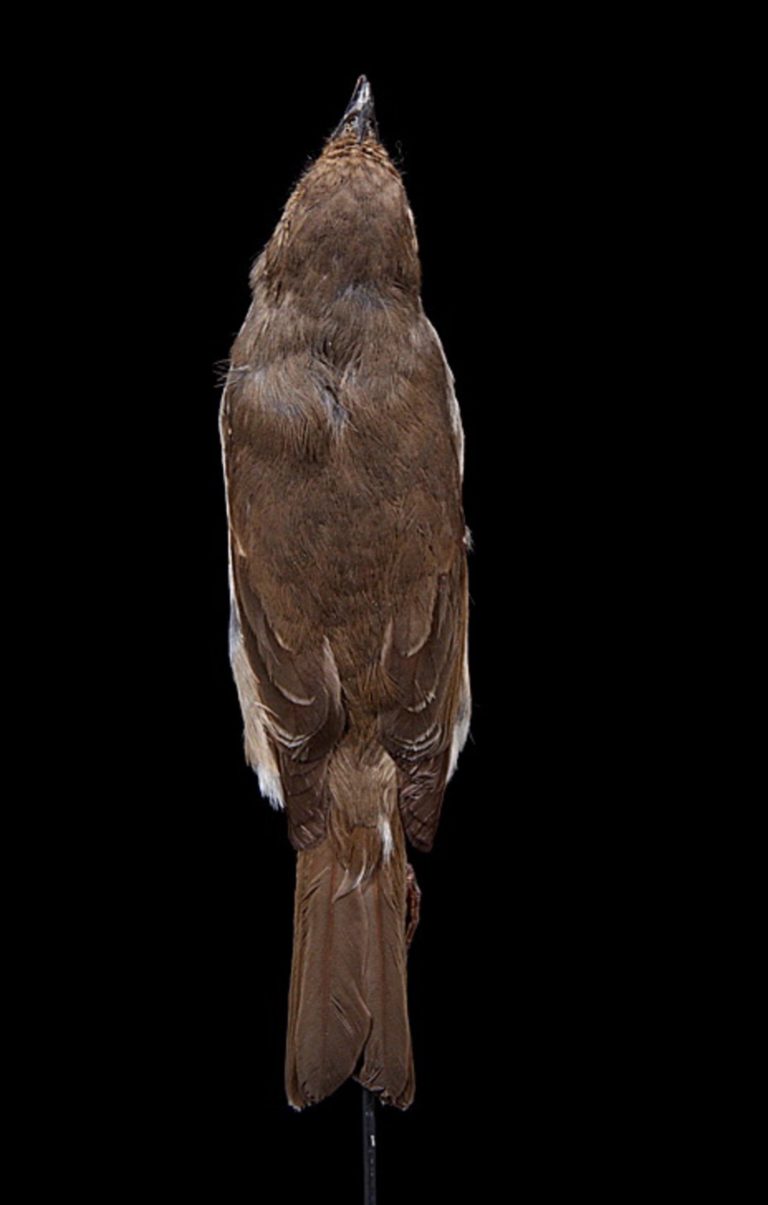
Kama’o, dorsal view. (Specimen ID: RMNH.AVES.110025; Kahaluamanu, Kauai, Hawaii.) © Naturalis Biodiversity Center
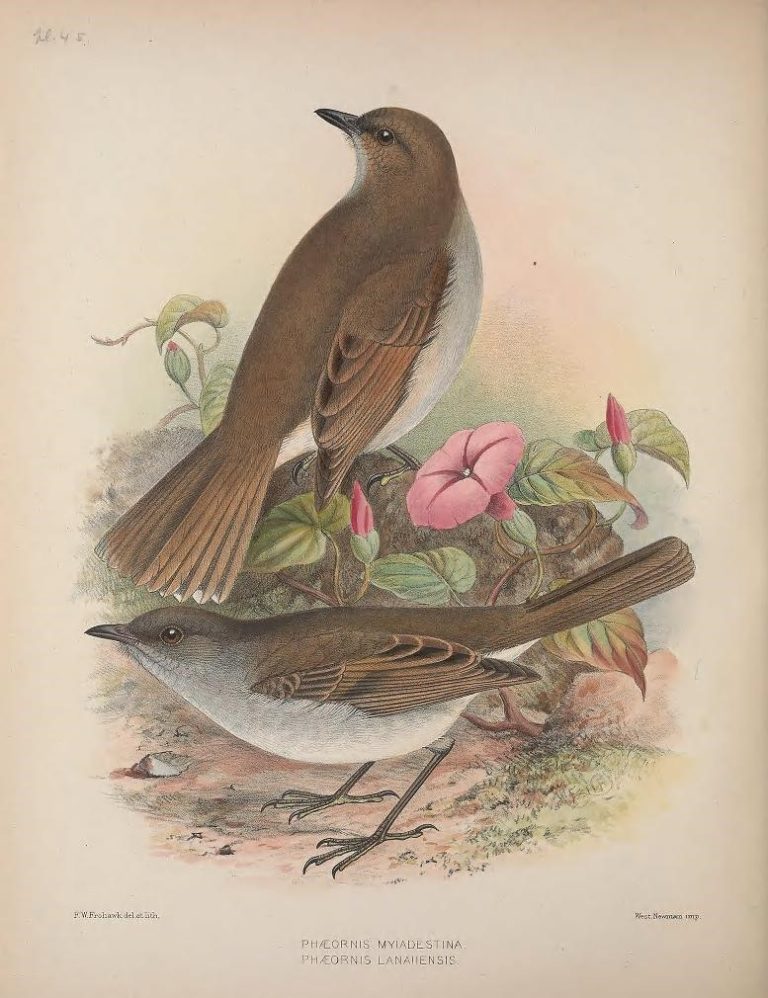
Kama’o (above) and Oloma’o. Frederick Frohawk, 1899
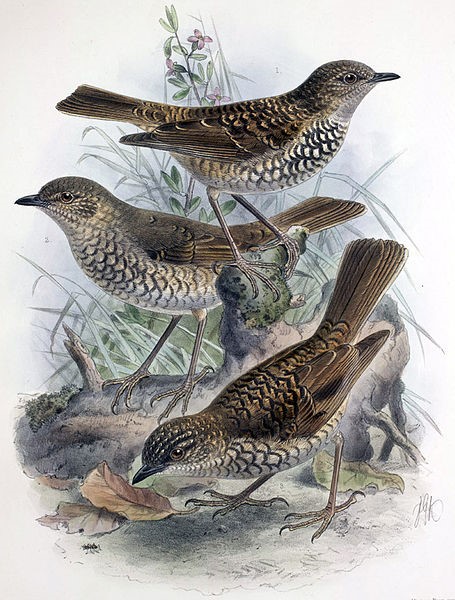
Oma’o, Kama’o (middle), and Oloma’o, all immatures. John Gerrard Keulemans, 1900
Notes
Monotypic species. Traditionally considered conspecific with the Amaui (M. woahensis), Oloma’o (M. lanaiensis), and Oma’o (M. obscurus), collectively known as the Hawaiian Thrush (M. obscurus), but recognized as separate species since 1982. Sometimes also considered conspecific with just the Oloma’o, but genetic analyses of relatedness reportedly support treatment as a separate species.
IUCN Red List Status: Extinct.
References
BirdLife International. 2016. Myadestes myadestinus. The IUCN Red List of Threatened Species 2016: e.T22708559A94165256. https://dx.doi.org/10.2305/IUCN.UK.2016-3.RLTS.T22708559A94165256.en. (Accessed July 24, 2020.)
Conant, S., H.D. Pratt, and R.J. Shallenberger. 1998. Reflections on a 1975 expedition to the lost world of the Alaka’i and other notes on the natural history, systematics, and conservation of Kaua’i birds. Wilson Bulletin 110:1-22.
Hume, J.P. 2017. Extinct Birds (Second Edition). Bloomsbury Publishing PLC, London.
Pratt, H.D., P.L. Bruner, and D.G. Berrett. 1987. A Field Guide to the Birds of Hawaii and the Tropical Pacific. Princeton University Press.
Pyle, R.L., and P. Pyle. 2017. The Birds of the Hawaiian Islands: Occurrence, History, Distribution, and Status. Version 2 (January 1, 2017). http://hbs.bishopmuseum.org/birds/rlp-monograph/. B.P. Bishop Museum, Honolulu, Hawaii.
